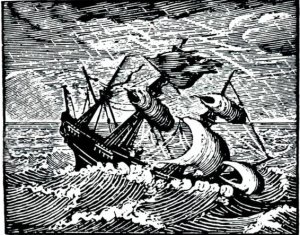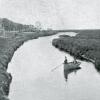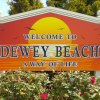Faithful Steward wreck deposits coins near Indian River Inlet
The Faithful Steward, bound from Londonderry, Ireland, to Philadelphia, ran aground on a shoal Sept. 1, 1785, with 249 passengers aboard. Stormy weather drove the vessel toward shore, where it became stranded in four fathoms (24 feet) of water within 100 yards of the shoreline. Strong winds capsized the ship, and 181 passengers, including 93 women and children, perished. Looters soon arrived, carried off trunks of personal cargo, and picked the pockets of the deceased. The ship carried 400 barrels of British copper halfpennies and rose gold guineas. The coins redeposited along the shore after strong storms, giving rise to the name Coin Beach.
That is the description of the shipwreck of the Faithful Steward on a historic marker dedicated in 2017 north of the Indian River Inlet. Coins continued to be discovered on the beach more than a century later. Many of those coins are on display at the DiscoverSea Shipwreck Museum in Fenwick Island.
The shipwreck has long been a fascinating topic with broad interest. In 1937, Col. W.S. Corkran, founder of Henlopen Acres, appeared on a national broadcast hosted by Phillips Lord to discuss the shipwreck.
“So much interest has been aroused recently by the tales of the finding of 18th century coins in the Indian River section that the special broadcast was requested by long distance telephone from New York for someone to tell the story in all its colorful detail.
“Mr. Corkran not only will tell the story of the actual discovery of the coins, but will treat it from practical and traditional angles, telling the latest theory of the possible origin of the coins from the wreck of the Irish vessel Faithful Steward which sank off Indian River in 1785, and the legend of the pirate Blueskin, who was Levi West, a native of Lewes alleged to have buried treasures around Indian River and who was a confederate of the famous pirate Blackbeard.”














.jpg)










































